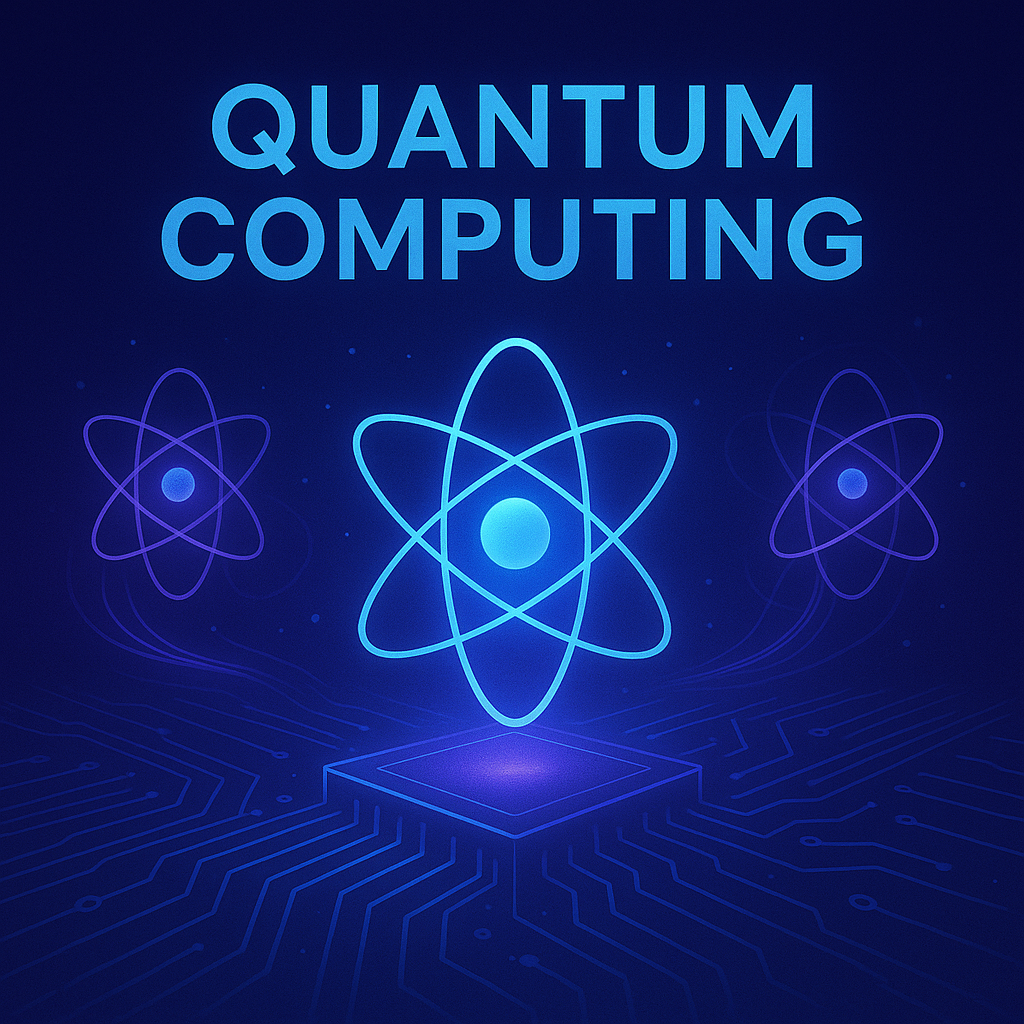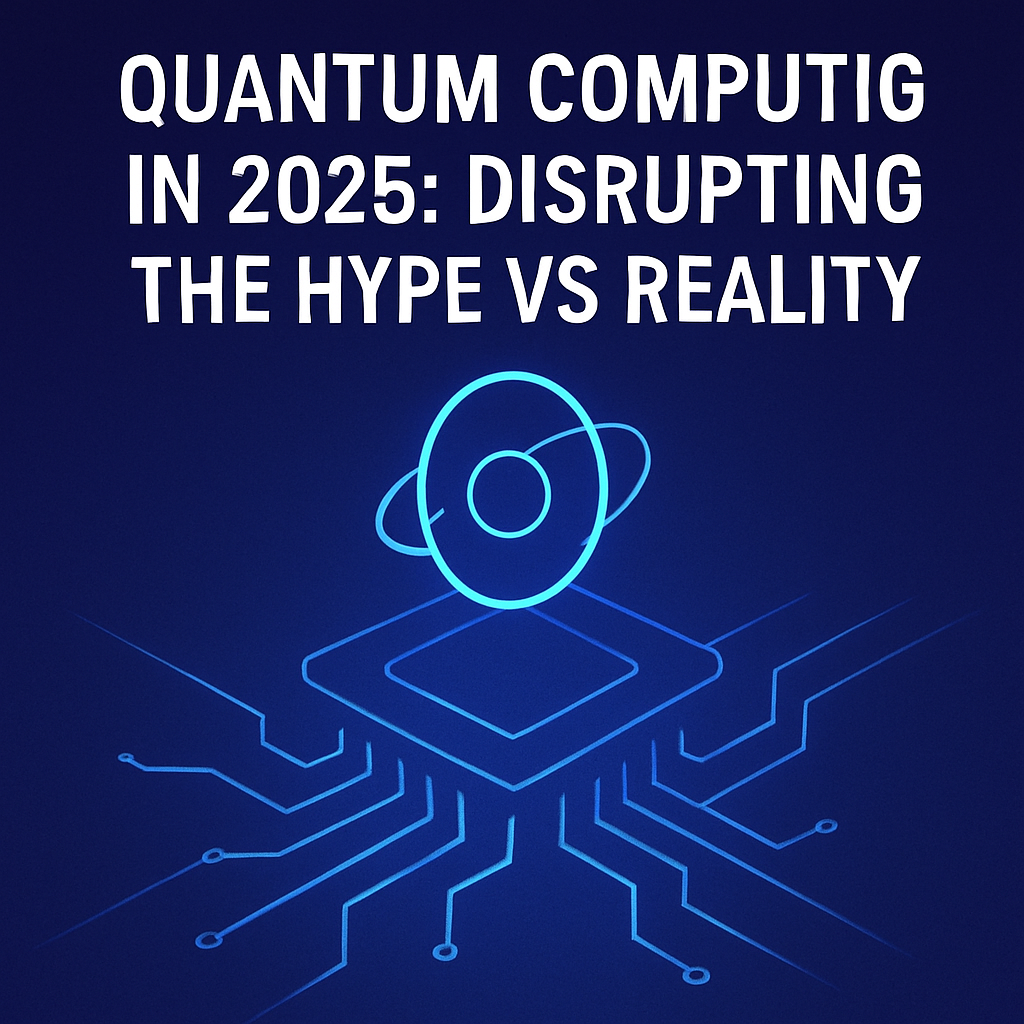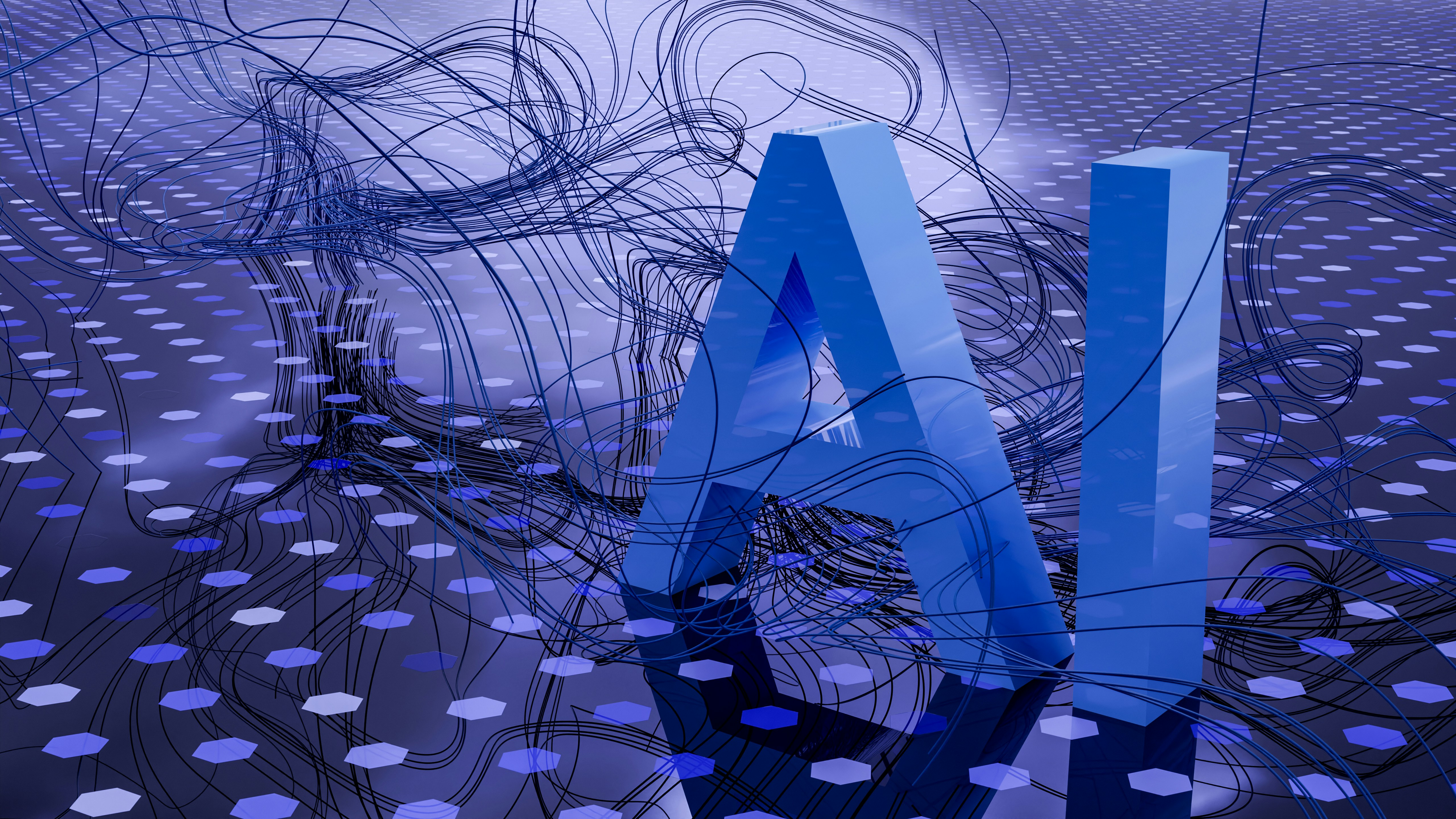Quantum Computing in 2025: Disrupting the Hype vs Reality
Introduction
Quantum computing has long stood as the pinnacle of next-generation technology, promising breakthroughs that could redefine industries. With the power to solve problems deemed intractable for classical computers, quantum computing is often heralded as the future of tech. But as we step into 2025, it’s essential to separate the tangible advancements from the speculative hype. Are we truly on the verge of a quantum revolution, or are we still navigating a theoretical frontier with more questions than answers?
In this article, we dive deep into where quantum computing stands in 2025. We’ll explore key developments, major players, promising applications, and the critical challenges still obstructing widespread adoption. Whether you’re a tech enthusiast, a decision-maker in enterprise IT, or simply curious about quantum’s progress, this comprehensive overview will give you the clarity you need.

1. What Is Quantum Computing?
At its core, quantum computing leverages the principles of quantum mechanics to perform calculations in fundamentally different ways compared to classical computers. While classical systems use binary bits (0s and 1s), quantum computers use qubits that can exist in superposition—being 0 and 1 simultaneously. This enables quantum systems to process a vast number of possibilities in parallel.
In addition to superposition, quantum computing utilizes entanglement, a phenomenon where qubits become linked such that the state of one instantly affects the state of another, regardless of distance. This property underpins the incredible potential for exponential speedup in solving certain classes of problems.
Key potential advantages include:
- Factorizing large numbers quickly (impacting encryption)
- Optimizing complex systems (like traffic, logistics, and portfolios)
- Modeling molecular structures for drug discovery and materials science
However, quantum algorithms require incredibly stable and error-resistant qubits, and this remains a monumental technical hurdle.
A commonly cited example of a quantum advantage is Shor’s algorithm, which can theoretically factor large numbers exponentially faster than the best-known classical algorithms. If realized at scale, this would break many of today’s encryption schemes. Another example, Grover’s algorithm, provides a quadratic speedup for unstructured search problems, offering efficiencies in database querying and AI optimization.
Quantum computing doesn’t aim to replace classical computing but to complement it—solving specific problems far more efficiently while classical systems continue handling general tasks.
2. The Big Players in 2025
Several organizations are investing heavily in quantum computing, each taking distinct approaches to building scalable and practical quantum systems.
- IBM Quantum: IBM continues to be a leader with its quantum roadmap aiming to surpass 100,000 qubits by the end of the decade. Its 2023 release of Condor, a 1,121-qubit processor, set a benchmark for scale. In 2025, IBM is focused on error mitigation and hybrid quantum-classical workflows. Its Qiskit framework remains one of the most widely used platforms for quantum experimentation and simulation.
- Google Quantum AI: Google made headlines in 2019 claiming quantum supremacy. In 2025, it has shifted focus to scaling qubit quality and implementing quantum error correction. Their latest architecture aims for logical qubits within the next few years. Google’s partnership with academic institutions continues to drive theoretical innovations and experimental proof-of-concepts.
- Microsoft Azure Quantum: Microsoft is betting on topological qubits, a more stable but extremely challenging architecture. As of 2025, they’ve yet to produce scalable quantum hardware but offer robust quantum simulation tools through Azure Quantum. Their integration with classical Azure services positions them well for enterprise experimentation.
- IonQ and Rigetti: These startups are innovating on trapped ion and superconducting qubit technologies. IonQ’s systems are accessible via cloud platforms and have shown improvements in qubit fidelity and execution times. Rigetti, meanwhile, has focused on providing mid-sized quantum systems with accessible APIs and SDKs for businesses.
- China and the EU: China’s government-backed research centers are pushing for quantum supremacy through advanced photonic and superconducting systems. Their work in quantum communication and secure networks is especially notable. The EU’s Quantum Flagship program continues to fund academic-industry collaboration, yielding strong theoretical contributions and prototype systems.

Japan, South Korea, and Canada are also ramping up public and private investment in quantum R&D, signaling the global race is far from over.
3. Key Breakthroughs (2023–2025)
Several notable milestones have occurred in recent years, pushing quantum computing closer to practical use:
- Quantum Error Correction: One of the biggest limitations in quantum computing is qubit instability. In 2024, Google and IBM both demonstrated improved logical qubit systems capable of running basic algorithms with reduced error rates. These developments are crucial in moving beyond the noisy intermediate-scale quantum (NISQ) era.
- Qubit Scaling: IBM’s Heron and Condor chips have scaled superconducting qubits while maintaining relatively high fidelity. IonQ has achieved 35 algorithmic qubits, meaning they can effectively use 35 qubits with low error rates. Advancements in cryogenic hardware and new materials have played a big role in these improvements.
- Hybrid Systems: Many enterprises are turning to quantum-inspired algorithms and hybrid systems that combine classical and quantum resources. These are being deployed in industries such as aerospace and pharmaceuticals. Hybrid workflows allow businesses to benefit from quantum methods even with current hardware limitations.
- Quantum Software Development: Tools like Qiskit (IBM), Cirq (Google), and Braket (Amazon) have matured, enabling more accessible quantum programming environments for researchers and developers. These platforms also offer cloud access to real quantum machines, which accelerates experimentation and education.
4. Enterprise Applications: Are They Real Yet?
While mainstream adoption is still years away, several pilot projects and quantum-inspired solutions are being tested across industries:
- Finance: Institutions like JPMorgan Chase and Goldman Sachs are exploring quantum algorithms for risk analysis, portfolio optimization, and fraud detection. These applications are currently limited to quantum simulators and hybrid approaches. Quantum annealing is also being tested for high-frequency trading strategies and pricing derivatives.
- Pharmaceuticals: Companies like Roche and Merck are partnering with quantum startups to model protein folding and molecular binding. These simulations, while not yet run on quantum hardware, benefit from quantum-inspired algorithms. The dream of personalized medicine and faster drug discovery is one of the most compelling motivations for the field.
- Logistics and Manufacturing: BMW, Volkswagen, and Airbus have run optimization trials using quantum annealing and hybrid quantum-classical models to improve routing and supply chain efficiency. These pilots demonstrate how even incremental quantum advantages can translate into millions in savings.
- Energy: ExxonMobil and others are experimenting with quantum models for simulating chemical reactions and optimizing energy grid operations. As climate change drives demand for efficient renewable energy solutions, quantum computing may help solve previously unsolvable energy storage and distribution challenges.
Quantum computing also shows promise in materials science, aerospace engineering, machine learning acceleration, and even art generation—though these remain largely theoretical in 2025.
5. Cryptography and Security Implications
Quantum computing poses an existential threat to current encryption methods like RSA and ECC, which rely on the difficulty of factoring large numbers—a task quantum algorithms like Shor’s could perform exponentially faster.
However, practical quantum computers capable of breaking RSA-2048 still require thousands of logical qubits, which remains beyond 2025 capabilities. Nevertheless, governments and businesses are preparing for a “Y2Q” moment—the point at which quantum systems could feasibly decrypt classical systems.
In response, the field of Post-Quantum Cryptography (PQC) is rapidly advancing:
- NIST’s PQC Standardization process has selected four algorithms (e.g., Kyber, Dilithium) to defend against quantum threats. These algorithms are now being implemented in government and corporate IT systems.
- Industry Transition: Major tech companies and government agencies are already transitioning to quantum-safe protocols, especially in sectors like defense, finance, and healthcare.
The introduction of quantum key distribution (QKD) networks, which use the principles of quantum mechanics to transmit cryptographic keys securely, is another area gaining traction, particularly in China and the EU. However, the scalability and cost of QKD remain significant obstacles.
In 2025, the cryptographic community is focused more on preparation than panic. While quantum threats are real, the timeline gives enough runway for secure adaptation.
6. Challenges That Remain
Despite impressive progress, several critical challenges hinder widespread adoption:
- Error Rates: Quantum systems are still plagued by noise and decoherence. Even small fluctuations in temperature or electromagnetic fields can destabilize qubits. Most algorithms require error correction that consumes hundreds or thousands of physical qubits for every logical qubit.
- Scalability: Adding more qubits without significantly increasing errors remains a core issue. Current architectures don’t scale easily, and more efficient designs are still in experimental stages.
- Hardware Requirements: Quantum computers require extreme conditions—like cryogenic temperatures and precise calibration—making them impractical for most environments. Advancements in portable, room-temperature quantum systems are in early R&D phases.
- Software Limitations: A shortage of quantum-native algorithms and skilled quantum developers hinders innovation. Quantum education is growing but still lags behind demand.
- Cost: Quantum hardware is extremely expensive to build and maintain, and ROI for enterprise remains speculative. This raises barriers to entry for startups and smaller companies.
- Standardization: There is a lack of industry-wide standards for quantum programming, hardware interoperability, and benchmarking. This fragmentation slows progress and creates vendor lock-in concerns.
These barriers mean that quantum computing in 2025 is still largely in the R&D and pilot phase.

7. The Hype Factor: What Media Gets Wrong
Quantum computing has captured the imagination of the tech press, but the coverage often exaggerates its readiness and capabilities. Common misconceptions include:
- “Quantum computers will replace classical systems.” In reality, they will augment specific tasks while classical computers remain dominant.
- “Quantum supremacy means practical superiority.” Supremacy refers to solving one contrived problem faster—not general utility. The applications of quantum supremacy experiments are limited and don’t yet impact commercial workloads.
- “Encryption is already broken.” This isn’t true yet. We’re still years away from breaking modern cryptography with quantum machines. Most encryption systems remain secure for the foreseeable future, though migration to quantum-safe methods is prudent.
- “All qubits are equal.” In fact, different quantum systems (trapped ions, superconducting circuits, photons) offer varying levels of stability, coherence, and scalability. Not all breakthroughs are created equal.
Tech media has a tendency to leap ahead of the science. Understanding the nuance is crucial for policymakers, investors, and the public.
Comparison Table: Classical vs Quantum Computing
| Feature | Classical Computing | Quantum Computing |
|---|---|---|
| Basic Unit | Bit (0 or 1) | Qubit (superposition of 0 and 1) |
| Parallelism | Limited | High (via superposition and entanglement) |
| Processing Power | Linear | Exponential (for some problems) |
| Error Rates | Very low | High (requires error correction) |
| Algorithms | Deterministic | Probabilistic & interference-based |
| Hardware Maturity | Mature | Experimental |
Leading Quantum Hardware Platforms in 2025
| Company | Hardware Approach | Qubit Count (Approx.) | Cloud Access | Notable Achievement |
| IBM | Superconducting Qubits | 433 | Yes | Roadmap to 1000+ qubits |
| Superconducting Qubits | 72 | Limited | Quantum supremacy demo | |
| IonQ | Trapped Ions | 35 (high fidelity) | Yes | High error-resilience |
| Rigetti | Superconducting Qubits | 84 | Yes | Modular chip architecture |
| Quantinuum | Trapped Ions | 32 | Yes | Long coherence times |
| D-Wave | Quantum Annealing | 5000+ | Yes | Optimization applications |
Conclusion: Where Do We Go From Here?
Quantum computing in 2025 is at a fascinating crossroads. Major strides have been made in error correction, scaling qubits, and exploring real-world applications. However, it remains a technology in transition—moving from theoretical possibility to experimental practicality.
The road ahead will demand continued investment in hardware innovation, algorithm development, and workforce training. For enterprises, the key is staying informed and engaged while avoiding the hype trap. Pilot programs and hybrid systems are the right direction for now.
As the field matures, the 2030s may see the first generation of commercially valuable quantum solutions. Governments will likely play a greater role in standard-setting and funding large-scale initiatives, while universities will lead the way in research and talent development.
Until then, quantum computing is best viewed not as a miracle cure but as a high-potential research frontier—worthy of attention, but requiring patience and precision. For tech enthusiasts and industry leaders alike, now is the time to build quantum literacy and prepare for the long game.
Frequently Asked Questions (FAQs)
1. Is quantum computing usable today?
Quantum computing is still largely in the experimental and research stage. While some quantum processors are accessible via cloud platforms for research and testing, they are not yet ready for general-purpose or mainstream enterprise deployment.
2. Can quantum computers break encryption in 2025?
No, current quantum systems in 2025 do not have enough stable, logical qubits to break encryption schemes like RSA-2048. However, governments and tech companies are preparing for this eventuality by adopting post-quantum cryptography.
3. What’s the difference between a qubit and a classical bit?
A classical bit can be either 0 or 1. A qubit, based on quantum mechanics, can be in a superposition of 0 and 1 simultaneously. This property allows quantum computers to process more complex problems in parallel compared to classical systems.
4. Who are the leaders in quantum computing?
Key players in the space include IBM, Google, Microsoft, IonQ, Rigetti, and government-backed research programs in China and the EU. These organizations are pursuing different hardware approaches, from superconducting qubits to trapped ions.
5. What industries will benefit most from quantum computing?
Finance, pharmaceuticals, logistics, energy, and materials science are the top sectors likely to benefit from quantum advancements, especially in areas requiring complex optimization and simulation.
6. How can I get started with quantum computing?
You can begin learning with platforms like IBM Qiskit, Google Cirq, or Microsoft Q#. These tools allow you to simulate quantum algorithms and even access real quantum hardware via the cloud. Online courses and university programs are also increasingly available.
7. What is quantum supremacy?
Quantum supremacy refers to the point when a quantum computer can solve a problem that is practically impossible for classical computers. It doesn’t necessarily mean the solution has commercial value but marks a significant scientific milestone.
8. What is the difference between NISQ and fault-tolerant quantum computing?
NISQ (Noisy Intermediate-Scale Quantum) computers operate with tens to hundreds of qubits and are prone to errors. Fault-tolerant quantum computing refers to future systems with error correction capabilities that can scale to thousands or millions of qubits for reliable operation.
External Resources
- IBM Qiskit – A great resource for those learning quantum computing through IBM’s platform.
IBM Qiskit - Google Cirq – Google’s quantum computing framework for building algorithms.
Google Cirq - Microsoft Q# – Microsoft’s quantum programming language and resources.
Microsoft Q# - IonQ – A leader in trapped ion quantum computing.
IonQ - Post-Quantum Cryptography – A key research area in quantum security.
Post-Quantum Cryptography (NIST) - Quantum Supremacy Paper – The breakthrough paper by Google on quantum supremacy.
Quantum Supremacy Paper (Google)
Internal Links (for SEO)
- Quantum Computing on MubarikMT – Link to other articles about emerging tech trends.
Learn More About Quantum Computing on MubarikMT - AI and Future Technologies – Connect to an article on AI, since AI and quantum computing are often linked in innovation.
Explore AI’s Future - Tech Industry Predictions for 2025 – Internal link to other content on trends in tech for the upcoming years.
Tech Industry Predictions for 2025 (Next Article)
Written by MubarikMT, Tech Trends Analyst & Editor at MubarikMT.com





